How Does Infrastructure as Code on AWS work?
Imagine having to manually provision and configure every device in a large corporation. Then visualize the upgrade process. How about patching? Then, picture ensuring conformity on
DevOps has revolutionized how software is developed and deployed by introducing a more collaborative environment for development and bridging the gap between developers and operations. All the while ensuring flexibility to meet any consumer or market demands. However, it would be best if you implemented a proper DevOps lifecycle in your organization to take full advantage of all the benefits offered by DevOps.
In this article, we will explore the complete DevOps lifecycle, its phases and best practices.
The DevOps lifecycle consists of the different stages involved in the DevOps process to guide users from development to deployment and monitoring. It provides a standardized structure to integrate DevOps practices into your delivery pipeline to increase the speed and reliability of the delivery process. Meanwhile, it offers the required flexibility to meet changing demands.
All the stages in the life cycle will continue to iterate throughout the project and go through the lifecycle continuously. There are seven stages in the DevOps lifecycle as follows;
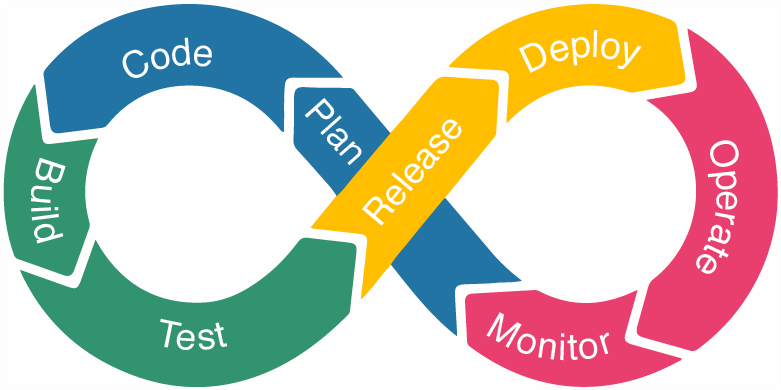
In addition to providing a structure to implement DevOps practices and offering a more resilient and flexible development and management experience, a properly implemented lifecycle will offer the following benefits:
Since we understand the need for a proper DevOps lifecycle now, let’s explore each of these stages individually.
Development is the beginning of the DevOps lifecycle, where the software is coded. In this stage, project requirements are analyzed, agreed upon, and then conveyed as codable requirements to the developers. It can be considered the project’s foundation as all the other aspects depend on the development requirements. However, even these requirements can change depending on the evolving demands of the end-users or market conditions.
The best way to tackle this stage is to implement standardized development best practices and utilize tools like version control to facilitate a collaborative coding and code management environment. Additionally, developers can use techniques like code analysis and review the code to create a streamlined development experience.
The newly developed code is integrated with the existing code base to check for compatibility in the next stage of the DevOps lifecycle. In addition to new code changes, integrations with third-party services can be expected in this stage.
As developers can make frequent changes, continuous integration platforms like Jenkins are vital for creating a workflow that will facilitate unity and integration testing, code analysis, packaging, and integration with version control tools to identify new changes automatically. It allows users to determine issues with the code early and quickly remedy them.
Testing is one of the longest stages of the DevOps lifecycle, where the application is tested for bugs or errors. Testing ensures the quality of the application and determines if the software meets the defined specifications. It will involve multiple teams from developers to quality assurance engineers and even site reliability engineers to ensure the application’s functionality, reliability, and performance.
You can use automated testing tools such as Selenium, Cypress, and puppeteer to enable continuous testing. It allows users to efficiently cover a wide range of testing requirements across multiple codebases and detect issues while saving time and resources.
Testing can also be used to simulate the production environments and understand the application behavior without deploying the application in a production environment. Automated testing will be plugged into a continuous integration tool to provide seamless integration between the stages.
Deployment is when continuous delivery tools are utilized to deploy the developed and tested application into a production environment. Unlike traditional monolithic deployments, where deployments are a one-time process, DevOps advocates continuous deployment where minor updates are constantly pushed to production.
Focusing on small deployments allows teams to push bug fixes and new features to the application quickly. It will also lead to a better end-user experience as bugs are fixed rapidly and new features are constantly added to the application.
Additionally, continuous deployments reduce the risk of significant deployment failures. Even in case of a deployment failure, you can quickly roll the application back to a previous version. This can reduce the impact on the end-users.
After the application is deployed, monitoring allows users to understand the application behavior better and respond to incidents effectively. Continuous monitoring is the optimal way to understand both the application and the underlying environment and detect anomalies quickly. Monitoring can include every aspect of the application, from simple CPU and memory utilization to monitoring API calls.
Understanding the health and behavior of the application using metric logs will be beneficial to identify any issues and mitigate them effectively. You can utilize tools like ELK, Nagios, and Prometheus to gain a unified top-down view of the entire application and a comprehensive monitoring experience.
Feedback is crucial for the DevOps process, and the feedback process starts from the planning stage of the development to end-user feedback on the final application. Feedback gained internally and externally by end-users can be used to improve the application and facilitate exact end-user requirements. Even when a functionality seems optimal, single feedback can change the entire perspective of the functionality and lead to improvements.
Another factor in guaranteeing the effectiveness of feedback is ensuring proper communication channels and maintaining them while constantly evaluating the information.
Operations are the final stage of the DevOps lifecycle, where the project is maintained after handing over the application to the end-users. Operations rely heavily on monitoring to understand the health of the application. It ensures that the application functions nominally and reliably throughout its operational life.
The responsibility of maintaining the application is primarily associated with the operations team. However, it can spread across to other teams in an issue like a bug requiring multiple teams to develop, test, and deploy the fix. In some cases, the Ops team is also responsible for providing user support and managing end-user feedback.
One factor that is missing from the DevOps lifecycle is security. While security particles may be incorporated separately at the development, testing, or monitoring stages, there is no standardized way to integrate security into the DevOps process.
Practices like DevSecOps aim to integrate continuous security into the DevOps lifecycle spanning the entire development process. Apart from that, security is handled by a single SecOps team; incorporating security through the development process will lead to a better security posture both for the end product and the development environment.
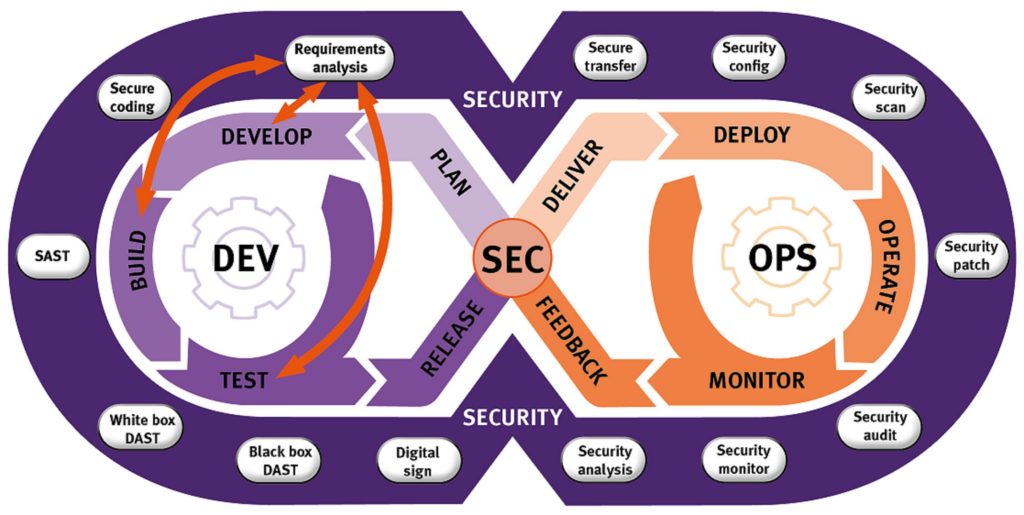
Most security scanning, auditing, and testing aspects can be integrated as an integral part of the delivery process with the help of automation. Starting with code analysis, secret scanning, dependency scanning to inoperative security monitoring as a part of the overall monitoring stage will facilitate a security-focused environment throughout the application lifecycle.
Improving the security posture leads to a more resilient application with a reduced likelihood of vulnerabilities or attacks compromising the system.
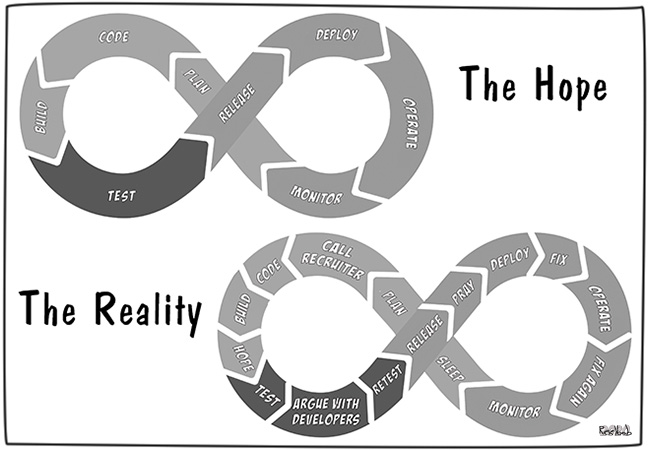
Implementing a proper DevOps lifecycle is the key to extracting all the advantages of DevOps practices. Combine the standard DevOps lifecycle with continuous security to create a flexible, resilient, and secure software delivery process to meet any changes in the technological landscape.
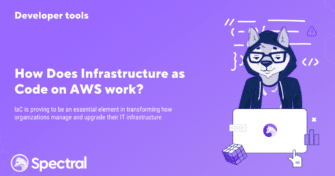
Imagine having to manually provision and configure every device in a large corporation. Then visualize the upgrade process. How about patching? Then, picture ensuring conformity on
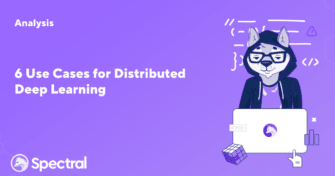
In the world of Big Data, decentralization is king. Seeing that today’s data sets are so large and complex that traditional database systems cannot handle them,

Updated 03.24 Approaching any finish line in life can be exciting yet stressful. This holds especially true in software deployment. The deployment phase is the final